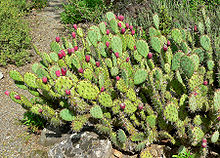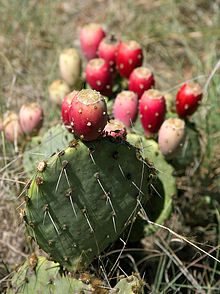For years there are hunters (not me) who believe Moon Phases are important in determining the best time to hunt mature whitetail bucks who can be seen moving in day light. These hunters are some of the best in the world. Yet studies are showing that the bulk of mature buck movement still occur at dawn and dusk (known as crepuscular activity) according to QDMA (Quality Deer Management Association) and a myriad of deer and buck studies. See below. Join QDMA Today!
https://www.qdma.com/10-things-know-mature-buck-movements/
Ok after reading that, does it change your mind? Maybe so. If you hunt by the Moon Phase and are successful are you going to stop using the Moon in your hunt calculations. Perhaps not. But the article and studies add to our knowledge base as hunters. Some of what I have read is simple common sense. Don’t muck up your deer stand before prime time. But if everyone else is mucking it up already, count your mature buck as nocturnal, no moon phase will change that. I found an area that had lots of deer activity, but it was all at night. Every other tree had a treestand in it. My cameras captured a buck at night…like a ghost in the distant blackness. There were very few deer taken there if any and narry a decent buck.
Years back I saw a trail of deer activity heading up a hill behind homes where I could not hunt, so I hunted the base of the hill. At pre-dawn I was on the ground waiting for light when footsteps approached and stopped just 25 yards from me. We both stood in silent darkness waiting for each to move. Finally the deer continued up the hill and I could not see him just hooves shooshing in the leaves. The following week I hunted afternoon with my recurve in a treestand not far from the encounter. It was a nice 8 point buck that came down the path but just out of my recurve kill range. I watched him get to an Oak tree with lots of nuts beneath it and could hear him gobble the acorns with the speed of lightning and darkness arrived. I sat for a few more minutes in the blackness listening to the buck eat like there was no tomorrow. As quiet as I could, I got down, the buck stopped eating, likely hearing me. I let the place cool off for a few day but did not see that buck again.
The QDMA report reinforces that bucks move at dawn and dusk. In my case above in late October the buck movement was at pre-dawn, before light and he was not chasing a doe. He was bedded before dawn, a nocturnal deer, almost.
I have killed several bucks, all without any Moon knowledge, all during the rut before November 10th except one on the 26th. One was rattled and grunted in, another was enticed out of his bed with scents, and the other 2 bucks were near does and nearby key trails where they appeared in mid morning and caused them to stand and move. I believe the buck was bedded so he could smell anything approaching. And two bucks I called in to bow range with a deer call, one a bleat and the other a grunt, both fell to a well placed broadhead.
In all cases, the November deer were killed during the day and not far from the does. I have seen 2 does on separate occasions go into buck bedding areas. One doe headed in at 9AM and the other at dusk. I believe seeking to be mated. I mean the ladies were just going right into their bedroom.
A mature buck according to QDMA is 4 1/2 years or greater. I have never seen a mature buck but once in New Brunswick, Canada and he bested me. He was huge of body, full neck and brisket, a bit of a pot belly and a solid set of antlers, usually more than 8 points. Like the image below.

Photo Getty Images.
New Hampshire deer are not as numerous as in New Jersey and Pennsylvania by a long shot and tend to be harvested in the southern part of the state as 1 1/2 and 2 1/2 year old deer and a few 3 1/2 year. Yes there are 4 1/2 year old deer down here but you will likely never see them. Deer in the northern part of the state require great effort and that is were you find the 4 1/2 year old bucks who cover lots of territory. Hunt them in snow looking for large buck tracks like the Benoit’s for success but be ready to walk miles and drag your 250 pound deer for miles. These are places where hunting partners are a necessity.
I am now interested in Moon Phases as novelty but one thing is for sure, if you believe something will happen, as in seeing a mature deer because a Moon chart says so, then your senses are keen, sharp and observant where otherwise you may walk within feet of a bruiser and never see him.
If moon charts increase your alertness then maybe that is all you need, a belief that it will happen. There will be many times where you see little or nothing, so having an edge perhaps helps.
Places like Alberta and Saskatchewan place corn to draw deer and bucks from far off places so you hunt often from a blind. If the years previous was good for deer then you will be in luck without any moon or in years past where there was heavy deep snow the herd took a beating.
Deer, particularly bucks that know they are being hunted are very very wary indeed. It is food and the urge to mate in the Rut that is their major Achilles heel in making them occasionally visible. If, during the rut, there are does nearby and buck scrapes, where bucks place their calling card of urine and tarsal gland then in NH non-urine based deer scents are suggested as a great tool to create curiosity or I have taken a baggie and small spade with me and collected dirt from local scrapes and freeze it. Snow laden beds and scrapes are places to collect deer odors too.
A recent NH deer kill at a check in station may be a place to ask a friend who is checking in their deer for a tuft of tarsal gland from a buck or doe.
So be alert, be ready! Moon or not! Think hunt the Rut where rattling grunting and scents work the best. I have purchased a non-urine based scent called REALDEER™ and bowhunters I spoke to in Ohio say it works as an attractant and cover scent. I will be using it this year. I can’t say it works for me yet but time will tell.
Good Hunting!
© 2018








